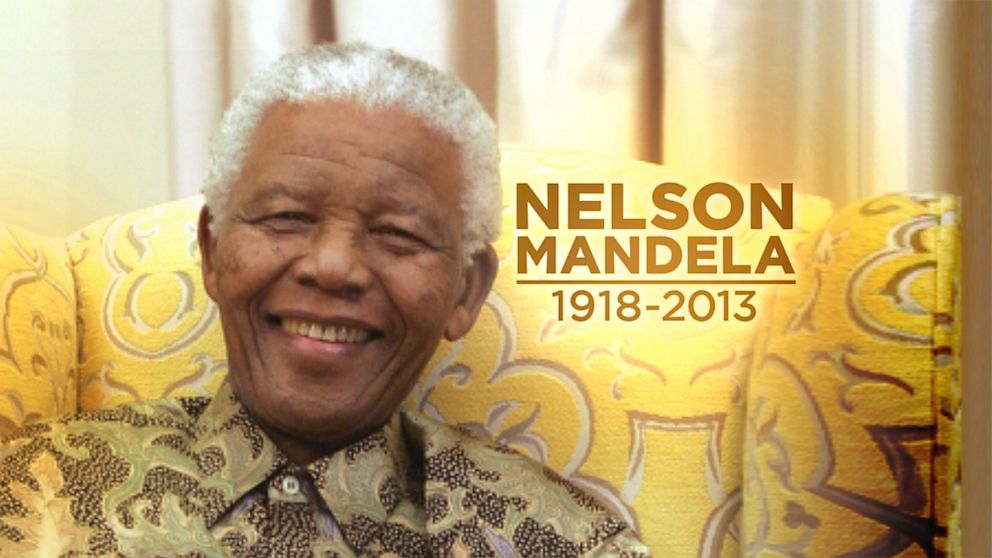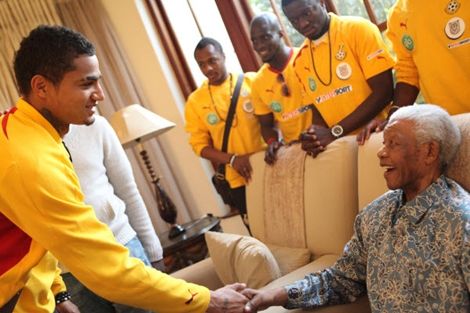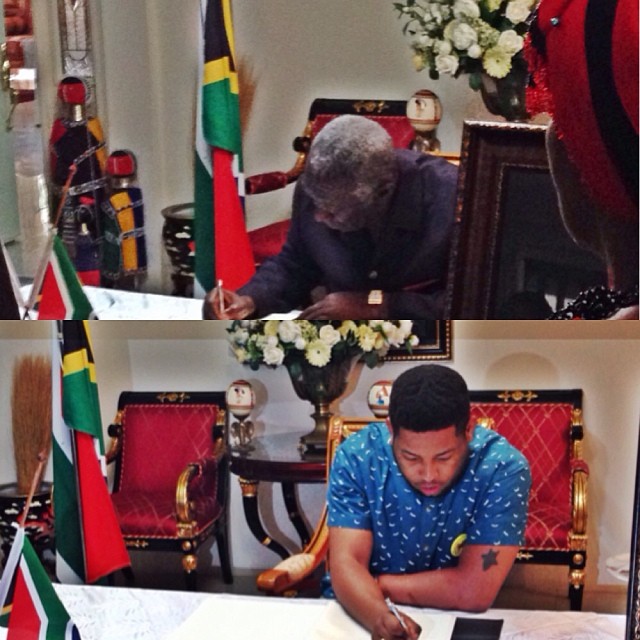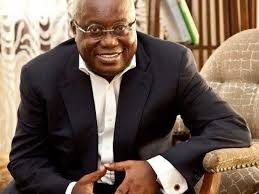RIP WORLD’S GREATEST: Nelson Mandela dead at 95
- Posted on
- Comment
 Nelson Mandela, the former South African president whose stubborn defiance survived 27 years in prison and led to the dismantling of the country’s racist and brutal apartheid system, has died. Mandela was 95 years old.
Nelson Mandela, the former South African president whose stubborn defiance survived 27 years in prison and led to the dismantling of the country’s racist and brutal apartheid system, has died. Mandela was 95 years old.
South Africa’s president says Nelson Mandela has died at age 95. Jacob Zuma says “We’ve lost our greatest son,” South African President Jacob Zuma said in announcing Mandela’s death.
Mandela had a number of issues with his health in recent years including repeated hospitalizations with a chronic lung infection. Mandela had been listed in “serious but stable condition” after entering the hospital in June before returning to home to receive continued medical care.
In April, Mandela spent 18 days in the hospital due to a lung infection and was treated for gall stones in December 2012.
Mandela’s public appearances had become increasingly rare as he dealt with his declining health.
His last public appearance was in July of 2010, when he attended the final match and closing ceremonies of the soccer World Cup held in South Africa.
Life of Nelson Mandela: See the Photos
In 2011, Mandela met privately with Michelle Obama when the first lady and her daughters traveled to South Africa.
Mandela and the Legacy He Leaves Behind
One of the giants of the 20th century, Mandela’s career was marked not only by his heroic resistance to racism, but also by his poised and soft spoken demeanor.
After enduring nearly three decades of prison, much of it at hard labor in a lime quarry, Mandela emerged as a gentle leader who became South Africa’s first black president. He was awarded the Nobel Peace Prize for his leadership in ending apartheid without violence, and later became a global statesman who inspired millions people around the world.
Mandela was born in 1918, the son of a tribal leader, in a remote village in South Africa.
His tribal name, Rolihlahla, meant “troublemaker,” a moniker Mandela would more than live up to in his lifetime.
In 1952, he emerged onto the national stage when he helped organize the first country-wide protests called the Defiance Campaign. That same year he opened the country’s first black law firm.
Ruth Mopati, his secretary at the firm, wrote about the way he was then in the book “Mandela,” saying, “He was able to relate to people with respect and therefore he was respected in return.”
While Mandela’s party, the African National Congress, had always been dedicated to non-violence, in 1960 the ANC was banned to prevent further protests after police shot dead 69 black protestors in what became known as the Sharpeville massacre.
The events radicalized the organization and led to the creation of the ANC military wing, for which Mandela became its first commander in 1961.
In 1962, Mandela was sent to prison on a charge of inciting a strike.
“At 1:30 in the morning, on March 30, I was awakened by sharp, unfriendly knocks at my door, the unmistakable signature of the police. ‘The time has come,’ I said to myself as I opened the door to find half a dozen armed security policemen,” Mandela said.
Two years later, Mandela was sentenced to life in prison for sabotage and conspiracy to overthrow the white government. Much of the next 27 years in prison were spent in the infamous Robben Island prison where he did hard labor in a lime quarry.
During his nearly three decades behind bars, Mandela would become a myth. The government even banned any use of Mandela’s image or words, leaving a whole generation to grow up knowing little about the world’s most famous political prisoner.
Nelson Mandela Teamed Up With White Leader F.W. de Klerk
Mandela spoke about his time in his autobiography: “A nation should not be judged by how it treats its highest citizens, but its lowest ones — and South Africa treated its imprisoned African citizens like animals.”
-abcnews










 (Selorm) |
(Selorm) |  (Nana Kwesi)
(Nana Kwesi)